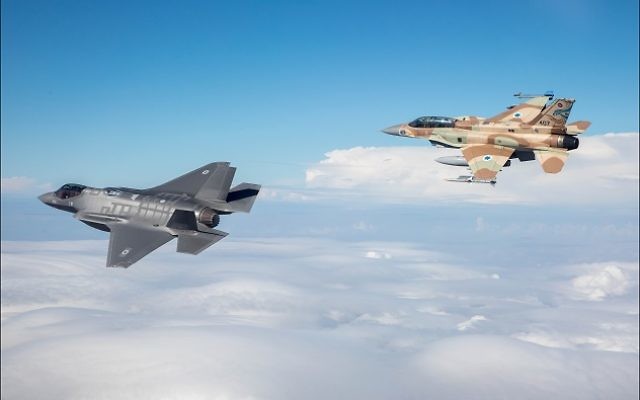Downed F-16 Doesn’t Alter Israel’s Air Dominance
The IAF has built a powerful aerial fleet through training and a long technology partnership with the U.S.

Syrian forces recently shot down an Israeli fighter jet with anti-aircraft missiles after an Israeli Air Force raid on Iranian military infrastructure in Syria.
The downed jet, an American-built F-16I Sufa, manufactured by Lockheed Martin, was one of Israel’s many high-tech fighter jets.
An event widely discussed in media outlets worldwide, the downing of an Israeli jet is a rare occurrence in Arab-Israeli bouts of combat. According to The New York Times, enemy fire had not claimed an Israeli fighter jet since the early 1980s, when Israel was fighting the Palestine Liberation Organization and other militants in Lebanon.
Israel has one of the most advanced air forces in the world. In part, the IAF’s success reflects the highly rigorous training and competitive vetting processes that Israeli fighter pilots have to go through. Also crucial to the IAF’s international pre-eminence is its modern fleet of fighter jets, most of which were manufactured in the United States.
Further, many of these jets have been reverse-engineered by Israeli technicians and engineers to accommodate the unique needs of the IAF, creating some of the most technologically advanced aircraft in the world. These Israeli improvements to American technologies are often shared with the U.S. defense establishment through regular technology exchanges that date back to the late 1960s.
The relationship between the United States and Israel that has fostered the development of this world-class fleet of military aircraft has been a work in progress. Before the late 1960s, the United States was apprehensive about providing any military equipment to Israel, especially advanced aircraft. (An exception to this rule was in 1962 when the Kennedy administration supplied Israel with Hawk anti-aircraft missiles, a defensive weapon.)
The calculus behind this hesitance was that U.S. officials feared that providing Israel advanced arms would spark China and the Soviets to provide similar technology to Arab states, catalyzing an arms race in the Middle East. Accordingly, Israel looked elsewhere for crucial military technology in the early years of the state.
Surrounding the 1948 War of Independence, Israel’s military planes consisted largely of Czech-supplied aircraft and donated or pieced-together British and American planes left from WWII.
After winning the 1948 war and developing strategic coordination with the French and British governments related to the 1956 Suez campaign, Israel acquired dozens of advanced, French-manufactured fighter jets.
Those French aircraft made up the majority of Israel’s fleet during the many infamous dogfights and air attacks that took place over the six days of the June 1967 war. Similarly, Israel attained hundreds of British-made Centurion tanks during this period, which likewise bolstered its strategic capacity for the 1967 war.
After that war, France, under the leadership of Charles de Gaulle, cut Israel off from purchasing military technology. But in 1968, President Lyndon Johnson, impressed with Israel’s military prowess in 1967, agreed to sell Israel U.S.-manufactured F-4 fighters and A-4 bombers.
A substantial upgrade, those jets gave Israel a qualitative edge over her belligerent neighbors. Further, the technological improvements that Israel made to these jets were shared with the Americans, who used those aircraft upgrades during the Vietnam War.
Despite the American aviation technology available in the 1970s and early ’80s, Israel developed and manufactured its own fighter jets because it wanted to be self-reliant and potentially a player in the military aircraft export industry.
Israel Aerospace Industries, established in 1953, began to produce the Kfir, Nesher and Lavi jets. While these aircraft were designed with the specific needs of the IAF in mind and performed well in air tests, they were prohibitively expensive to produce. By the late 1980s, the Israeli government decided it was easier and significantly cheaper to rely on the United States for advanced military aircraft, including combat helicopters.
Today, the IAF’s fleet includes American-made F-15s and F-16s and, as of 2016, the U.S. military’s most advanced fighter, the F-35.
While the rare loss of an Israeli jet to enemy fire is a blow to the IAF’s combat record, Israel still maintains the strongest, most advanced and best-equipped air force in the region.
Eli Sperling is the Israel specialist and assistant program coordinator for the Center for Israel Education.



comments